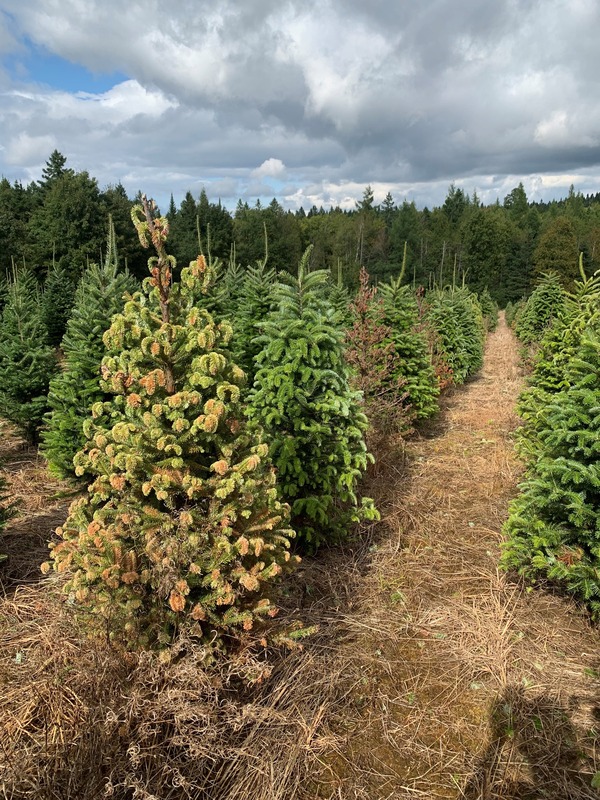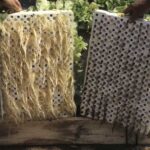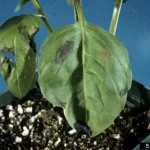Understanding Phytophthora abietivora
There are plenty of threats to plants on our planet, ranging from pests to diseases. Some of these threats can affect plants inside and outside the greenhouse. Among these threats is Phytophthora abietivora, a fungal pathogen that targets fir trees and poses potential risks to greenhouse crops. Knowing about this pathogen, its effects, and how we can combat it is essential to protect our forests and gardens.
What is Phytophthora abietivora?
Phytophthora abietivora is a fungal pathogen discovered in 2019 when it was isolated from diseased Christmas trees in Connecticut in the United States. It has since become known for its devastating impact on fir trees, especially in nurseries and plantations.

See how Healthy Hydroponics uses Multiplex to help growers make decisions
How Does It Spread?
Phytophthora abietivora loves wet and cool environments, making it a perfect fit for the habitats of fir trees and greenhouse conditions. It spreads through water, soil, and infected plant material such as seedlings or contaminated equipment such as pots or trays. Once it infects a plant, it damages the roots, making it hard for the plant to get water and nutrients. Over time, this weakens the plant, often leading to its death if the infection is not managed.
Recognizing the Symptoms
Spotting symptoms of Phytophthora abietivora early can make all the difference. Here are some symptoms to look out for:
- Wilting and Yellowing of Needles and Leaves: Infected trees and plants may have yellowing, wilting needles or leaves, indicating water stress.
- Cankers: Look for dark, sunken areas on the lower trunk or roots of trees. In greenhouse crops, look for dark lesions at the crown of the plant.
- Root Rot: Infected plants will have dark, mushy roots when uprooted.
- Stunted Growth: Plants in greenhouses may show stunted growth and less vigor.
- Leaf Blight: Some plants might develop necrotic spots and lesions on their leaves.
The Broader Impact
In greenhouses, Phytophthora species can be a nightmare, affecting crops like tomatoes, peppers, cucumbers, ornamental plants, and herbs [4]. The humid conditions of greenhouses can be perfect for these pathogens, making vigilance and preventive measures crucial [4].
How Can We Manage It?
Combating Phytophthora abietivora requires a mix of approaches:
- Cultural Practices: Choose planting sites wisely and improve soil drainage. Avoid over-irrigation and ensure good air circulation around the plant.
- Chemical Control: Fungicides can help prevent infections, though they may be less effective once the pathogen is established.
- Quarantine and Sanitation: Implement strict measures to prevent moving infected soil, water, or plant material. Clean and disinfect tools and equipment to avoid spreading the pathogen.
- Water Management: In greenhouses, avoid overwatering and ensure proper drainage to prevent waterlogging, which can favor Phytophthora.
- Environmental Control: Maintain appropriate humidity, temperature, and nitrogen levels in greenhouses to reduce the pathogen’s chances of thriving.
Conclusion
Phytophthora abietivora poses a significant threat to fir trees and potentially to greenhouse crops. By understanding this pathogen and using a mix of management strategies, we can help protect our plants from pathogens such as Phytophthora abietivora.
Must Read:
[1] https://inspection.canada.ca/en/plant-health/invasive-species/plant-diseases/p-abietivora/fact-sheet
[2] Li, D.-W., Schultes, N. P., LaMondia, J. A. and Cowles, R. S. 2019. Phytophthora abietivora, a new species isolated from diseased Christmas trees in Connecticut, U.S.A. Plant Disease 103(12):3057-3064.
[4] https://www.greenhouse-management.com/greenhouse_management/greenhouse_disease_managemnet/phytophthora_root_rot_greenhouse_diseases.htm
[5] https://ag.umass.edu/greenhouse-floriculture/fact-sheets/root-diseases-of-greenhouse-crops
![]()
Tanya Irani is the CEO of Healthy Hydroponics InnoTech




